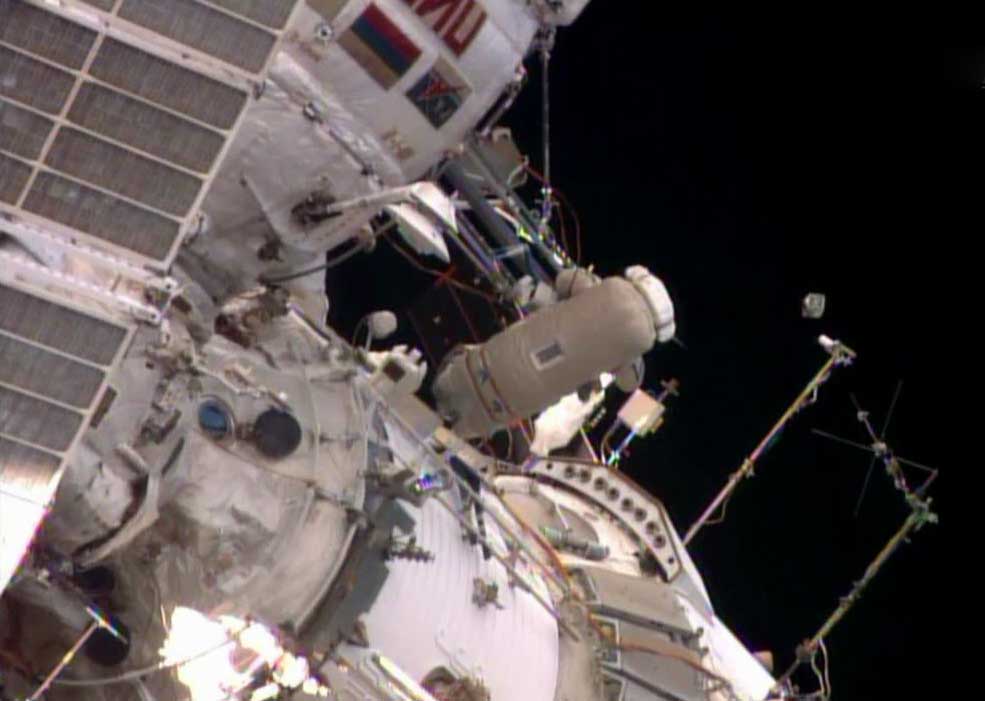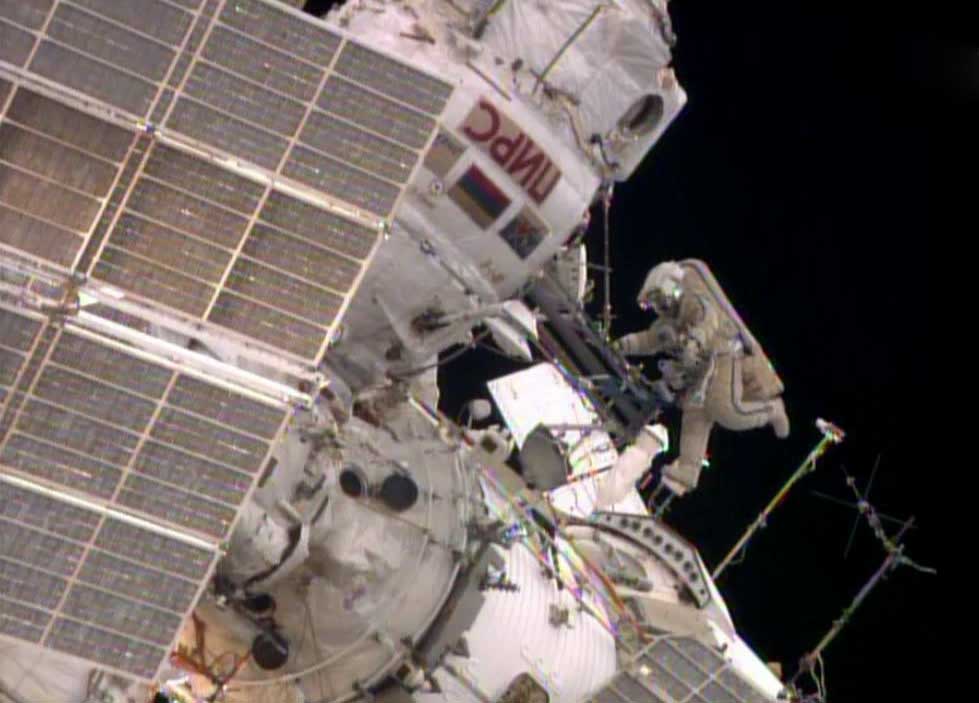Two Expedition 40 spacewalkers, clad in Russian Orlan spacesuits, wrapped up a 5-hour, 11-minute excursion outside the International Space Station at 3:13 p.m. EDT Monday. Flight Engineers Alexander Skvortsov and Oleg Artemyev deployed a small science satellite, retrieved and installed experiment packages and inspected components on the exterior of the orbital laboratory.
Shortly after the spacewalk began at 10:02 a.m., Artemyev manually deployed Chasqui 1, a Peruvian nanosatellite designed to take pictures of the Earth with a pair of cameras and transmit the images to a ground station. The project is part of an effort by the National University of Engineering in Peru to gain experience in satellite technology and emerging information and communication technologies.
The spacewalkers installed the EXPOSE-R2 experiment package, a European Space Agency-sponsored suite of experiments, on the exterior of the Zvezda service module. The package includes two astrobiology studies that will investigate biomaterials and extremophiles – organisms that are tolerant of environmental extremes. Results from these experiments may contribute to life-detection strategies for future robotic exploration of Mars.
While Flight Engineer Alexander Skvortsov retrieves hardware inside the International Space Station’s Pirs airlock, Flight Engineer Oleg Artemyev stretches his legs.
While on the conical section of Zvezda, they attached a handrail clamp holder for the Automatic Phased Array antenna. Skvortsov and Artemyev set up that communication systems antenna during their first spacewalk on June 19.
The cosmonauts also set up the Plume Impingement and Deposit Monitoring unit on the Poisk Mini Research Module-2.
Skvortsov and Artemyev retrieved several science packages designed to expose a variety of materials to the harsh environment of space. While on Poisk, they removed one cassette and install another on a materials experiment known by its Russian acronym SKK. The spacewalkers also retrieved a panel of sample materials from the Vinoslivost payload.
The retrieval of a Biorisk experiment container outside Pirs completed the science package roundup for the two cosmonauts. Biorisk studies the effects of microbes on spacecraft structures.
Skvortsov and Artemyev also collected residue samples from a window on Zvezda.
During the spacewalk, Commander Steve Swanson was isolated to the Poisk module and his Soyuz TMA-12M spacecraft docked there due to the closure of hatches in support of the excursion. Swanson, Skvortsov and Artemyev arrived at the station March 27 aboard that Soyuz. Flight Engineers Reid Wiseman, Alexander Gerst and Max Suraev had access to much of the remaining area of the station, including the Zarya module, their Soyuz TMA-13M vehicle and the Rassvet module to which it docked on May 28, as well as the entirety of the U.S. segment of the station.
Monday’s spacewalk was the 181st in support of space station assembly and maintenance.
While he was isolated inside Poisk, Swanson photographed the masts of the station’s starboard solar arrays for further inspection by the flight team.
Wiseman spent part of his day setting up new test samples for the Canadian version of the Binary Colloidal Alloy Test, or BCAT-C1. Results from this investigation of colloids – mixtures of small particles distributed throughout a liquid – will help materials scientists to develop new consumer products with unique properties and longer shelf lives.
Later, Wiseman and Gerst teamed up for a conference call with the ground team to discuss Friday’s robotic release of Orbital Sciences’ Cygnus cargo vehicle. Gerst, with assistance from Wiseman, released Cygnus from the 57-foot Canadarm2 robotic arm, completing the commercial cargo vehicle’s month-long mission to deliver nearly 3,300 pounds of science and supplies to the orbiting laboratory.
Cygnus fired its thrusters for the final time at 8:34 a.m. Sunday to enable the cargo ship to slip out of orbit for its fiery decent into the Earth’s atmosphere. Shortly afterward, station crew members were able to photograph the vehicle as it began to break up harmlessly over the Pacific Ocean at 9:22 a.m.
Gerst rounded out his workday Monday relocating items stowed inside the Quest airlock to prepare that area for the installation of a new Nitrogen Oxygen Recharge System, or NORS, at a later date. Wiseman meanwhile conducted an inspection of the station’s portable emergency provisions, including fire extinguishers and portable breathing apparatuses.




























